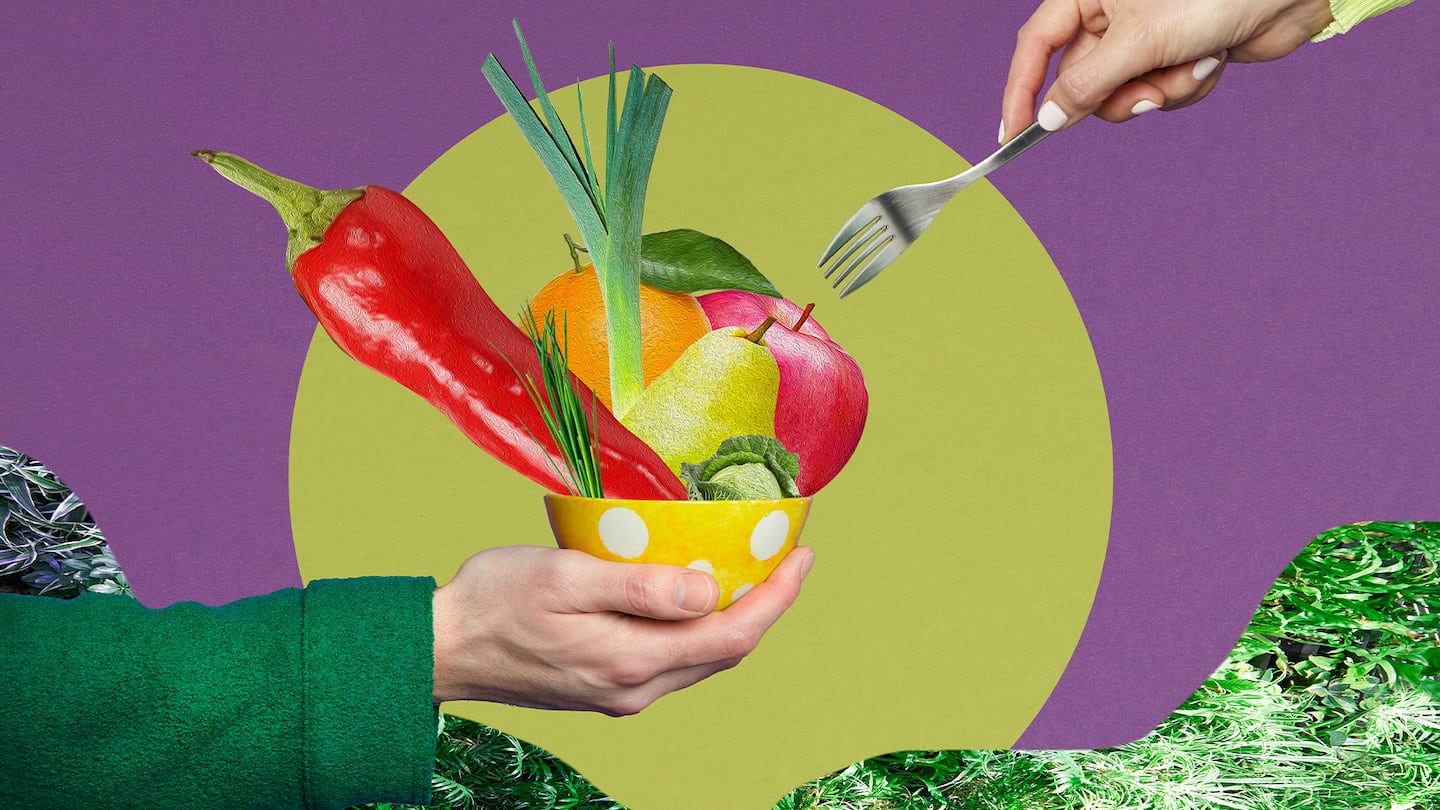The Business of Fashion
Agenda-setting intelligence, analysis and advice for the global fashion community.
Agenda-setting intelligence, analysis and advice for the global fashion community.

Gen-Z is doing wellness differently.
While Millennials helped usher in the era of the detox in the 2010s, which was defined by giving up the likes of sugar, wheat or alcohol in the pursuit of improved wellness, Gen-Z — and some younger Millennials — are taking a more balanced approach.
“Historically, wellness culture didn’t like to acknowledge our bad habits. It liked to paint a very glossy, fantasised version of what a healthy lifestyle looks like,” said Brielle Saggese, a lifestyle strategist at trend forecasting agency WGSN.
This generation of wellness consumers go to the gym and still drink too much on Saturday night, or meditate but also stay up too late doom scrolling on TikTok, said Saggese. They’ve helped give rise to terms like “California sober,” which refers to those who eliminate alcohol but still use cannabis recreationally, and have contributed to the burgeoning popularity of psychedelics.
ADVERTISEMENT
“Wellness to me just means being happy, ultimately. I don’t want to go on a diet or do Pilates five days a week,” said Poppy*, a 32-year-old reporter from London. Last year, she quit vaping, but said she just enjoyed a two-week vacation in the US without restricting her eating habits at all, and doesn’t feel the need to cut out anything now she’s back home.
“If you give up one vice, you’ll probably just pick up another,” she added.
It’s also a readjustment to the hedonistic time that followed the pandemic, when in a rush to shake off lockdown-era restrictions, people pushed all their limits – an April 2022 New York Magazine headline proclaimed wellness to be dead and “Long live the martini,” clouds of cigarette smoke filled the streets and ad campaigns from the likes of Diesel and Suitsupply showed bright young things cavorting and canoodling.
The new ideal is finding a happy medium that accommodates bad habits, but also leaves room for temporary pauses to take a window of time off from a vice. Time off from dating apps is called “boysober,” said Saggese, while taking a break from cannabis to lower tolerance levels is called a “T break”.
An increasing sense of nihilism, spurred by widening wealth gaps, environmental crises and geopolitical conflict has made many young people want to opt out of the idea of future-proofing themselves altogether.
For brands, therein lies a perplexing problem. How do you sell wellness to those with such contradictory beliefs? Forward-thinking brands are offering solutions that speak to both vice and virtue, as well as working with the idea of a flexible mind set that doesn’t demonise having a little of what you fancy.
The desire for a middle ground is partially a reclaiming of wellness on one’s own terms, rather than following didactic rules from the outside, said Rachel Lee, global insights strategist at web agency The Digital Fairy.
“Gen-Z are just really able to see through a lot of these wellness brands, the fads and the elitism,” she said.
ADVERTISEMENT
Those who grew up with almost lifelong internet access are able to see the darker side of the wellness industry, such as how it may exclude people of colour, people with disabilities or larger bodies from the conversation, she said.
It’s also part of Gen-Z’s desire to set better boundaries than the generations before them, a term that Saggese and Lee both noted as being especially popular. Young people are more confident saying no, or drawing a line with their friends, family or employers when they’re uncomfortable, or faced with something that doesn’t align with their expectations.
Those attitudes have made restrictive wellness goals not just impractical for Gen-Z, but actively undesirable.
“People are realising that their obsession with wellness was actually becoming unhealthier than the habits that they were already participating in,” said Saggese, adding that there are now gyms that also have cocktail bars on the premises. “There’s definitely more brands playing in the middle ground, which is smart because that’s where most consumers live,” she said.
Consumers, even those as young as the Gen-Z cohort, have also lived through enough wellness trend cycles to know that chips usually fall in the same place.
“[They see that] something gets demonised, and then they get offered something to wean them off it,” said Andraa Hernández, who writes the food and beverage trend newsletter Snaxshot.
Gen-Z — synonymous with sharing their lives online — is also more comfortable with publicly owning their weak spots.
Lee pointed to the popularity of TikTokers who chronicle their journey to stop drinking or quit smoking, adding that their videos usually have a quantified goal and are meticulously documented so they can be followed by other people. Caroline Vasquez Huber, co-founder of nicotine replacement therapy brand Jones, said she sees shame and stigma around bad habits or addictions falling away, too. Revealing to one’s friends that you were about to quit vaping may have once felt onerous, but lately, there’s been a mindset shift.
ADVERTISEMENT
“People are taking pride in it,” she said. In addition to making nicotine replacements, Jones — which is currently fundraising, having already closed a $1.1 million pre-seed round — sells caps and tote bags emblazoned with the word “Quitter.”
Dr. Mark Rubinstein, head of medical affairs at nicotine replacement company Blip, said flexible approaches are preferable, as willpower alone usually doesn’t work, anyway.
“There’s a lot of talk about inner strength, but [nicotine] is such a powerful addiction,” he said. “I don’t see failure to quit as weakness.”
Blip also embraces a non-subtle approach. Its branding is bright and neon, and it enlisted eccentric social media personality Princess Gollum as the brand’s face. One of its hero products is nicotine-free flavoured toothpicks that tingle in the mouth, designed to provide a distraction from not smoking or vaping.
In a time when relatability is prized on social media, there’s also more of an impetus on people to own up to their vices, said Saggese, pointing to supplements specifically marketed for hangover reduction.
Hernández noted the rise of “better for you” sodas like Poppi and Kin Euphorics, condiments and even instant ramen, all of which offer the same comfort and convenience consumers want, but with claims around lower sugar or salt content. It’s not just a premium push, as mass retailers are moving in, too. Target recently announced plans to add a permanent edit of non-alcoholic drinks, including the adaptogenic line De Soi.
Consumers are aware they can’t supplement their way out of sickness altogether, and are wary of brands that claim to offer any kind of panacea. Lee points to a growing distrust for institutions in general amongst younger consumers, and how wellness brands and movements may end up being viewed in much the same way.
Some will push back on wellness altogether. Brands playing in the wellness space should look to offer more halfway house options: in every vice supposedly quitted, there’s a nascent opportunity.
“If you swing too hard, the pendulum will always swing back,” said Hernández.
Lee gives the example of people quitting partying, saying that it might not be because they don’t want to drink anymore – they might just not like the club environment.
“They still might want to have a board game night or dinner party and have a bottle of wine at home,” Hernández added.
Poppy’s name has been changed to protect her identity.
Editor’s Note: This story was updated on Tues. 16 April to clarify what a “T break” is.
Remedy Place, a luxury social wellness club, has completely rebranded the spa experience with an eye on the male demographic. This year, the company has an ambitious plan to expand starting with its third and largest 7,400-square-foot club in New York’s SoHo neighbourhood this spring and an upcoming product line that brings self-care into the home.
As we head into the new year, a look at what The Business of Beauty has its eye on.

Daniela Morosini is a Beauty Correspondent at The Business of Beauty at BoF. She covers the global beauty industry, with an interest in how companies go to market and overcome hurdles.
Black founders carry a markedly higher burden when it comes to educating investors on the value and viability of their business ideas — but there is an art and science behind knowing when your brand is ready and what kind of investors will be the best fit.
Landing a retail partnership is often seen as a major milestone for beauty founders — but it brings a bevy of new challenges, from the logistical complexities to setting a marketing budget. Black entrepreneurs, who typically have far less capital to work with, often face tough choices.
The firm has been working on a listing since at least 2022, with previous attempts buffeted by volatile markets.
In a three-part series, The Business of Beauty explores how Black founders Monique Rodriguez, Danessa Myricks and more built, launched and scaled their multi-million-dollar businesses. In part one, a look at how these entrepreneurs found their niche and harnessed early lessons that were critical to their growth